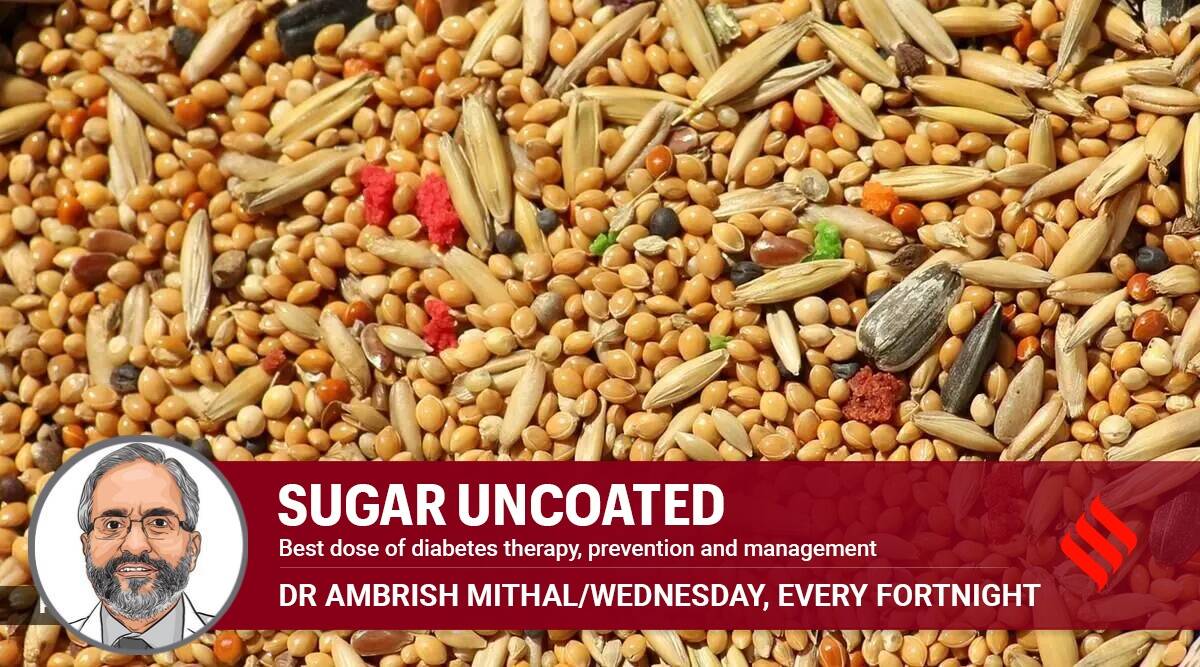Why should millets replace rice and wheat as the staple in your plate? They lower diabetes, cholesterol & triglycerides

All major millets are useful in diabetes. Jowar contains slowly digestible starch (SDS) which delays carbohydrate absorption. Besides the fibre, vitamin E, phenolic compounds and tannins have anti-oxidant properties. Human studies have shown that jowar-based foods reduce the post-meal spike of blood glucose in diabetes, says Dr Ambrish Mithal, Chairman and Head, Endocrinology and Diabetes, Max Healthcare
2023 has been declared as the “International year of Millets” by the United Nations. The media is full of news and information about “millets.” A question repeatedly asked these days is, are millets good for people with diabetes?
What are millets?
Millets are warm weather grains, grown and consumed in the Indian subcontinent for more than 5,000 years. Belonging to the grass family, millets are small, hardy grains with low requirements of water and are thus highly tolerant to drought and other extreme weather conditions. They do not require fertilisers. They can develop from seeds to ready-to-harvest crops in about three months. Millets lost importance as wheat and rice became the main crops in India and they were relegated to being coarse or “rural” grains. However, their short growing period and long survival on storage (> 2 years) make them a great option for India.
Millets are nutritious, fibre-rich grains that act as a probiotic for micro-flora in our gut. The fibre in millets hydrates our colon and helps prevent constipation. Giving up gluten has become exceedingly popular, almost a fashion, these days. Well, millets are gluten-free and are perfect substitutes for wheat if you want to give up gluten or are suffering from Celiac Disease. In general, they contain 7-12 per cent protein, 2-5 per cent fat, 65-75 per cent carbohydrates and 10-12 per cent fibre.
There are three major millets grown in India — jowar (sorghum), bajra (pearl millet), and ragi (finger millet). There are several other ‘minor’ millets like foxtail, little, kodo, proso and barnyard millet grown in localised regions of India.
Each variety of major millet has some unique properties. The protein content of jowar and bajra is approximately 10-11 gm/100 gm, which is about the same as whole wheat but higher than rice. Ragi has lower protein content (about 7 gm/100 gm). The fibre content of major millets (about 11gm/100 gm) is similar to whole wheat but significantly higher than refined wheat flour or rice (<3 gm/100 gm). One, however, has to be wary of the processed options available in the supermarket as their fibre content and nutrition value can be much lower than natural or less processed millets. All three major millets contain iron but bajra scores above the others in this regard. Ragi is rich in calcium and is the most significant non-dairy source of this mineral in Indian diets, which makes it particularly useful for those with bone issues like osteoporosis. Incorporating ragi in the diet is a great idea for those seeking to increase calcium intake without having to take pills, or for those who have milk allergy/lactose intolerance. Fat soluble B vitamins are present in all three major millets. Bajra is especially rich in B3 (niacin). What about millets and diabetes? A 2021 meta-analysis showed that millets may help lower the risk of developing Type 2 diabetes and lower the HbA1c count in individuals with diabetes. That is because these grains have a lower glycemic index or GI, an index used to score how quickly a food raises blood glucose levels. The lower GI of millets is principally because of their high fibre content. They are absorbed slowly and produce a feeling of satiety earlier than refined grains. Even when added to meals, millets reduce post-meal blood sugar spikes. Long term millet consumption in diabetes lowered fasting and post-meal blood glucose levels by 12 to 15 per cent. There was a reduction in HbA1c level (from 6.65 to 5.67 per cent) among pre-diabetic individuals who consumed millets for a long period. Minimally processed millets were 30 per cent more effective in lowering GI of a meal compared to milled rice and refined wheat. Millets can also lower cholesterol absorption and hence reduce the risk of heart disease. So, if you have diabetes or want to reduce your chances of developing it, using millets in place of refined wheat or white rice is a great choice. All major millets are useful in diabetes. Jowar contains slowly digestible starch (SDS) which delays carbohydrate absorption. Besides the fibre, vitamin E, phenolic compounds and tannins have anti-oxidant properties. Human studies have shown that jowar-based foods reduce the post-meal spike of blood glucose in diabetes. This benefit is reduced if refined flour is used rather than the coarse form. In addition to the generic properties of millets, bajra may reduce the triglycerides too, due to the presence of vitamin B3 (niacin). Ragi contains slowly digestible starch which, like jowar, delays carbohydrate absorption. Besides, polyphenols in ragi inhibit the enzyme aldose reductase, which could potentially reduce diabetes complications. Minor millets have some nutritional properties which are superior to three major millets. For example, foxtail and proso millet have the highest protein content (>12g/100 gm) and are also exceptionally rich in copper and niacin.
How can we use millets in our daily diet?
Whole grain millets work well for porridge and upma type of preparations. They can also be used as khichdi. Millet flour can be used to make chapatis and the batter can be used for idli or dosa. Remember, however, that the more processed or refined the flour, the less nutritious it is. A good approach is to rotate millet use or use mixtures. This will ensure that we obtain maximum benefit.


